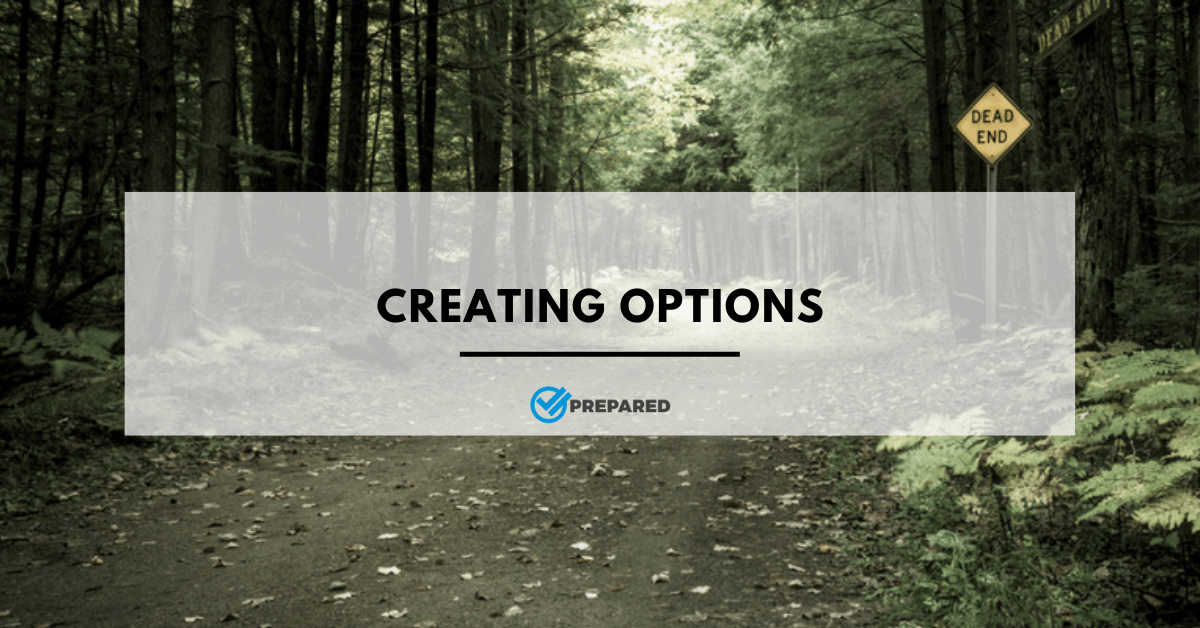There are a lot of blogs, articles, and books on the topic of disaster preparedness. There are also many experts, all eager to provide advice on how to prepare for disasters. Their advice covers a range of subjects: what equipment to buy, skills to learn, and how to put together a bug-out bag. However, all of this can become confusing or even overwhelming, especially if you are starting out or new to the field of disaster preparedness. The aim of this post is to help you make sense of it all and to clarify the one goal you need to keep in mind when preparing for disasters.
What is preparedness?
Disaster preparedness, or prepping as it is often referred to, is focused on taking steps to prepare for disasters or disruptive events that can occur in the future. The UNDDR defines ‘preparedness’ as “the knowledge and capacities developed by governments, response and recovery organizations, communities and individuals to effectively anticipate, respond to, and recover from, the impacts of likely, imminent or current disasters”.
The UNISDR further comments that “Preparedness … includes such activities as contingency planning, the stockpiling of equipment and supplies, the development of arrangements for coordination, evacuation and public information, and associated training and field exercises”. This definition is useful if you are considering preparedness from an academic or theoretical point of view, but if you need practical advice on how to prepare, this definition can still cause prepping to be overwhelming. So, let’s simplify it and say that disaster preparedness is all about creating options.
Disaster preparedness is about creating options
Whether you are prepping for yourself, your family, your community or your business, the aim of preparation is to create options. Think about it; preparedness is primarily focused on what you will do, or how you will survive, during the aftermath of a disaster. In essence, disaster preparedness requires you to make certain decisions and take certain steps now, to provide you with a better outcome following a disruptive event.
For the purpose of this discussion, a disruptive event can refer to a short-term failure in the supply of water or electricity. It can also refer to a large-scale event such as an earthquake or severe flooding, or even a complex emergency such as prolonged civil unrest. Irrespective of the type of event, your disaster preparedness should be focused on providing you with a range of options you can consider in the immediate run-up and aftermath of the event.
For example; let’s assume that there is a sudden disruption in the water supply to your neighborhood or city. If you are not prepared, you will have little choice but to go to the nearest shop to purchase a few bottles of water. Accidentally this is also what most of your neighbors will do, and the shop might be out of stock by the time you get there. However, you can be prepared. By keeping a few bottles of water in your house, you still have the option to go and buy more water from the shop, but you do not necessarily have to. You have the choice to use your own supplies.
Disaster preparedness is not just about emergency supplies
Preparedness is not only about emergency supplies such as water or food; it also relates to knowledge and skills. Let’s assume there is a severe storm and you cannot leave your house for a few days. Consider what you will do if your partner or child becomes ill. If you are not prepared, you will have no other option but to wait for medical care to arrive, or to travel to a hospital or doctor once the roads are open again. However, if you have equipped yourself with medical knowledge and keep a supply of medicine and equipment, you still have the option to wait for medical care, but you also have the option to start initial treatment for your partner or child.
These are two basic examples, but the same applies to some different situations:
1) The default options during a food shortage are to compete for food or starve. Establishing a sustainable garden beforehand provides you with the option to produce your own food.
2) The default option when your home or city becomes unsafe is to take the risk and remain behind or frantically try to find a way to escape. Establishing and equipping an off-site bug-out location beforehand provides you with the option to leave your house if you feel it is necessary.
3) The default options during violent conflict are to flee or to enter a fight unprepared. By training and equipping yourself with combat skills and the appropriate weapons, you have the option to get into the fight in a much better position, if you choose to do so.
In all of these cases, you can still decide to go with a default option if you feel it is the appropriate action at the time. However, with adequate preparedness, you can create better options, and that can mean the difference between life and death.
Conclusion
The list of skills to learn, equipment to purchase or infrastructure to establish during your preparedness might seem never-ending. Moreover, these initiatives can require substantial investment in time, energy and often money. Keeping the mindset of preparing to create future options for yourself or your family, might provide you with a framework to prioritize the prepping options, and select which ones to focus on first. Consider these principles of personal preparedness to get started.

Chris was born and raised in South Africa and has worked in the field of risk management, organisational resilience, and business continuity for more than a decade. During his career he has seen how private and public sector organisations benefit from effective risk management and business continuity planning. Realising that families and communities can also benefit from the same tools, methodologies, and principles, he started Prepare with Foresight.
Prepare with Foresight was launched to assist individuals and families to have the peace of mind that they will be able to recover from and successfully adapt to the consequences of adverse events.

